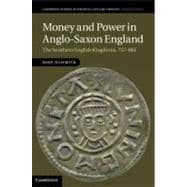
Note: Supplemental materials are not guaranteed with Rental or Used book purchases.
Purchase Benefits
What is included with this book?
| List of figures | p. viii |
| List of maps | p. xii |
| List of tables | p. xiii |
| Acknowledgements | p. xiv |
| List of abbreviations | p. xvi |
| Introduction | p. 1 |
| Coinage in southern England and its neighbours 757-865 | p. 4 |
| The historical setting: Mercia,Wessex and the Vikings | p. 9 |
| Money In Its Political Context | p. 13 |
| Kings, states and power in England and its neighbours | p. 16 |
| Royal resources | p. 23 |
| Land and warriors | p. 29 |
| Towns and trade | p. 32 |
| Conclusion | p. 36 |
| Coinage as a royal resource: the Roman legacy | p. 37 |
| Emperors, kings and minting | p. 39 |
| Minting profits | p. 41 |
| Looking at Coinage: Iconography and Inscriptions | p. 47 |
| Coins, kings and propaganda | p. 47 |
| 'Portraits' | p. 53 |
| Offa, novus Constantinus? | p. 54 |
| After Offa | p. 64 |
| Archiepiscopal portraits | p. 67 |
| Crosses and other religious iconography | p. 69 |
| Inscriptions | p. 72 |
| Numismatic titulature | p. 79 |
| Conclusion | p. 84 |
| Authority and Minting I: The King | p. 87 |
| Royal coinage in England before c. 740 | p. 90 |
| The establishment of royal coinages in northwest Europe c. 740-c. 770 | p. 96 |
| The development of royal coinage: the Mercian regime 757-c. 825 | p. 100 |
| The development of royal coinage: the West Saxon regime c. 825-65 | p. 106 |
| Case studies in royal coinage I: gold coinage | p. 112 |
| Case studies in royal coinage II: the interstices of royal coinage | p. 117 |
| Authority and Minting II: Mints, Die-Cutters and Moneyers | p. 128 |
| Mint-towns | p. 128 |
| Moneyers and die-cutters | p. 132 |
| The moneyers of Anglo-Saxon England | p. 142 |
| Origins and parallels | p. 142 |
| Connections and positions | p. 146 |
| Case studies in the role of moneyers I: favoured moneyers | p. 150 |
| Case studies in the role of moneyers II: the Anonymous coinage | p. 153 |
| Kings, mints and moneyers | p. 154 |
| Value Judgements: Weight and Fineness | p. 156 |
| Metal standards | p. 157 |
| Silver sources | p. 157 |
| Fineness | p. 161 |
| Weight standards | p. 168 |
| Offa's weight standards | p. 171 |
| Offa, Charlemagne and the coin reforms of 792-4 | p. 175 |
| Metrology after 792/3 | p. 178 |
| Production of Coinage | p. 181 |
| Coinage and recoinage | p. 181 |
| The scale of minting | p. 184 |
| The productivity of moneyers | p. 192 |
| Contexts and comparisons | p. 194 |
| Conclusion | p. 196 |
| The Circulation of Coinage | p. 199 |
| English money, foreign money | p. 203 |
| Global trends within southern England: 'monetary recession, without geographical retreat' | p. 209 |
| A tale of two mints: Canterbury and Ipswich compared | p. 211 |
| London | p. 214 |
| Rochester and Southampton: the minor mints | p. 216 |
| Coin-circulation and kings, moneyers and clergy | p. 218 |
| The rate of loss: monetization and production compared | p. 224 |
| The forces behind circulation | p. 229 |
| The monetary economy of southern England | p. 229 |
| Changes in the monetary economy | p. 231 |
| Contexts of circulation: pottery and metalwork | p. 239 |
| Contexts of circulation: Francia, Northumbria and Italy | p. 244 |
| Conclusion | p. 251 |
| The Nature of Coin-Use in the Early Middle Ages | p. 252 |
| Background: Mauss, Pirenne, Grierson and after | p. 252 |
| Coins and commerce? | p. 259 |
| Gifts and coins | p. 260 |
| Case study: payments in Anglo-Saxon charters | p. 267 |
| Coinage and exchange in context | p. 273 |
| Coinage, markets and peasants | p. 276 |
| The problem of small change | p. 284 |
| Conclusion: coinage in the economy | p. 291 |
| Conclusion | p. 293 |
| Bibliography | p. 296 |
| Index | p. 340 |
| Table of Contents provided by Ingram. All Rights Reserved. |
The New copy of this book will include any supplemental materials advertised. Please check the title of the book to determine if it should include any access cards, study guides, lab manuals, CDs, etc.
The Used, Rental and eBook copies of this book are not guaranteed to include any supplemental materials. Typically, only the book itself is included. This is true even if the title states it includes any access cards, study guides, lab manuals, CDs, etc.